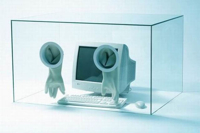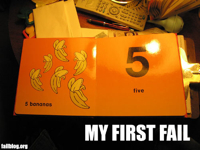By Guest Blogger Randy Wilhelm – CEO of netTrekker
 One of the most obvious ways to engage students is to give them access INSIDE of school to all of the amazing Web 2.0 tools that engage them OUTSIDE of school. Who hasn’t tried to get through to his 15 year old with an iPod cranked in his ears and a cell phone glued to his hands?
One of the most obvious ways to engage students is to give them access INSIDE of school to all of the amazing Web 2.0 tools that engage them OUTSIDE of school. Who hasn’t tried to get through to his 15 year old with an iPod cranked in his ears and a cell phone glued to his hands?
But as students’ familiarity with and reliance on the Web 2.0 technologies grows, schools are still fighting the battle of how to incorporate these engaging tools while keeping kids safe and protecting them from inappropriate content and online activities.





 Vast is too small a word to describe the
Vast is too small a word to describe the  Growing up in New England I was taught that it was rude to discuss politics, religion, or money with casual acquaintances. Later, when I entered the business world, I was never one to socialize much with co-workers beyond lunch or meals on the road. It isn’t that I have a problem with making friends through work – I often do – but as a matter of preference I like to keep a little distance between my work life and my personal life.
Growing up in New England I was taught that it was rude to discuss politics, religion, or money with casual acquaintances. Later, when I entered the business world, I was never one to socialize much with co-workers beyond lunch or meals on the road. It isn’t that I have a problem with making friends through work – I often do – but as a matter of preference I like to keep a little distance between my work life and my personal life. How is the marketing mix for companies that sell to K12 schools evolving? At a time when we are experiencing an explosion in the number and type of marketing programs we are also seeing rebalanced budgets and a consolidation among the large support organizations. The economic downturn has only accelerated these trends – it isn’t responsible for them.
How is the marketing mix for companies that sell to K12 schools evolving? At a time when we are experiencing an explosion in the number and type of marketing programs we are also seeing rebalanced budgets and a consolidation among the large support organizations. The economic downturn has only accelerated these trends – it isn’t responsible for them. Education jobs fell for the first time since 1959 while enrollments were increasing. There were only three other years in the past 50 years where education employment shrank – and all of them were during periods of declining enrollment as the baby boom petered out.
Education jobs fell for the first time since 1959 while enrollments were increasing. There were only three other years in the past 50 years where education employment shrank – and all of them were during periods of declining enrollment as the baby boom petered out. My last post on the difficulty of educational reform got me thinking about that other massive system we are trying to reform – healthcare. One way to understand the healthcare system is to compare it to education – where we have had universal single payer access for over 100 years.
My last post on the difficulty of educational reform got me thinking about that other massive system we are trying to reform – healthcare. One way to understand the healthcare system is to compare it to education – where we have had universal single payer access for over 100 years. The Superintendent’s panel at
The Superintendent’s panel at  Clive Thompson over at
Clive Thompson over at